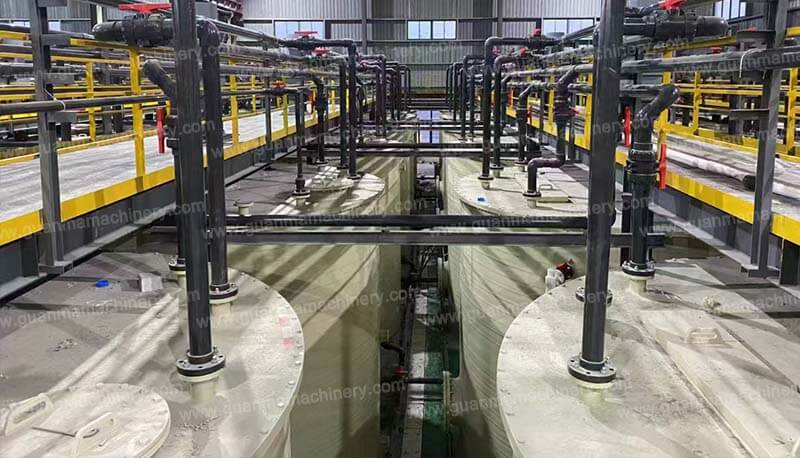Hydrometallurgical recycling methods for spent lithium-ion batteries involves using various acidic or alkaline solutions to transfer metal ions from electrode materials into leachates. These metal ions are then extracted from the solution using techniques such as ion exchange, precipitation, and adsorption.
Hydrometallurgical Recycling Methods
1. Chemical Leaching
Process Overview: Chemical leaching involves crushing the spent batteries and using appropriate chemical reagents to selectively dissolve the metal elements from the electrode materials.
Advantages: This method requires relatively low investment in equipment, making it suitable for small to medium-scale battery recycling operations.
Requirements: To enhance metal extraction efficiency, the batteries must be finely classified based on their chemical composition before crushing, to match the chemistry of the leaching solution.

2. Solvent Extraction
Process Overview: Solvent extraction uses certain organic reagents to form complexes with the target metal ions, which are then separated using suitable reagents.
Advantages: This method can achieve high purity and recovery rates for specific metals.
Challenges: It requires high corrosion resistance in equipment and the use of large amounts of organic solvents, which can lead to secondary environmental pollution and higher recycling costs.
3. Ion Exchange
Process Overview: Ion exchange utilizes the different adsorption coefficients of ion exchange resins for metal ion complexes to separate and extract metals.
Advantages: This method is simple and easy to operate, making it a popular choice for metal separation.
Applications: Ion exchange is widely used in the recovery of lithium, cobalt, and nickel from leachates.

Benefits of Hydrometallurgical Recycling
High Recovery Rates: Hydrometallurgical processes can achieve recovery rates of valuable metals often exceeding 90%.
Environmental Sustainability: By recycling batteries, these methods reduce the need for primary mining and prevent the disposal of hazardous waste.
Economic Value: The recovered metals can be sold back into the market, creating a circular economy and generating significant economic value.
Hydrometallurgical recycling technology for spent lithium-ion batteries is a sophisticated and effective method for recovering valuable metals. Despite the complexity of the processes, the high recovery rates and environmental benefits make it a valuable solution for sustainable battery recycling.




